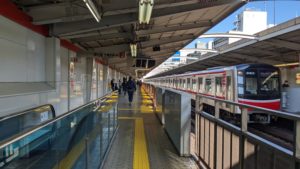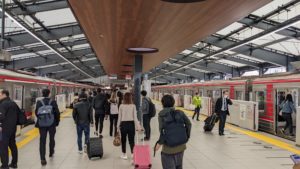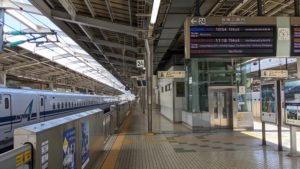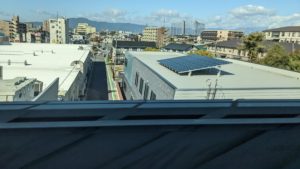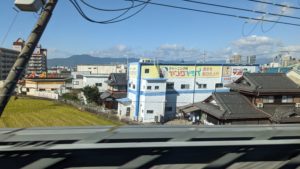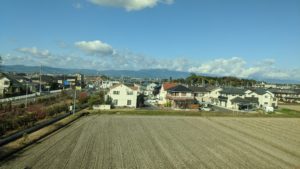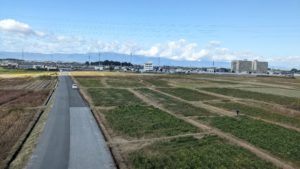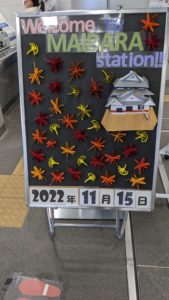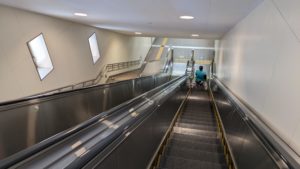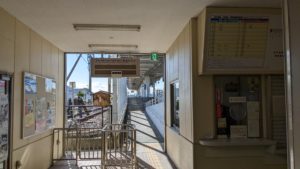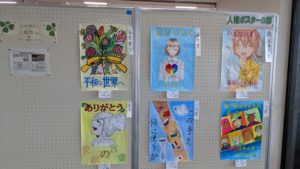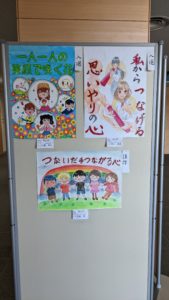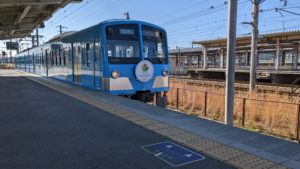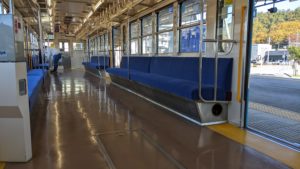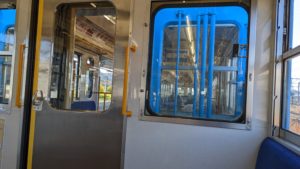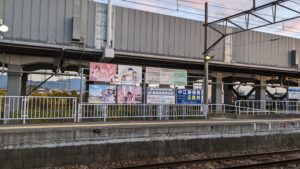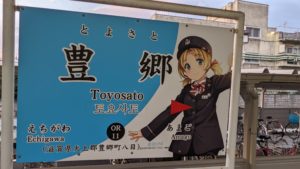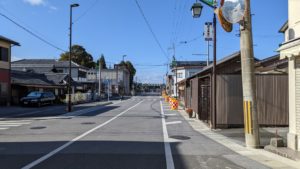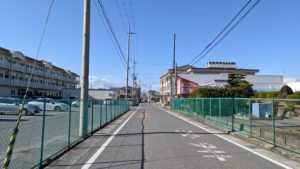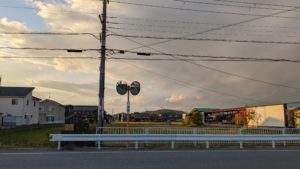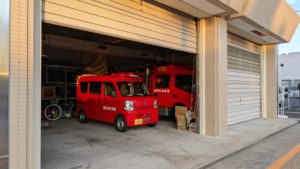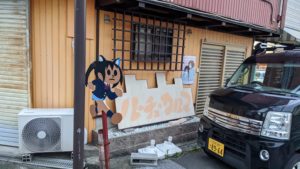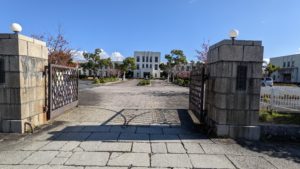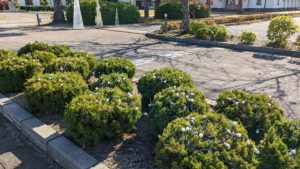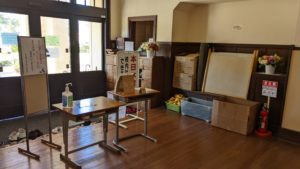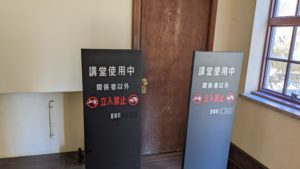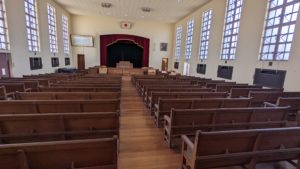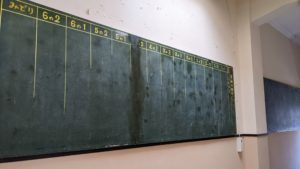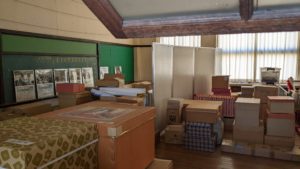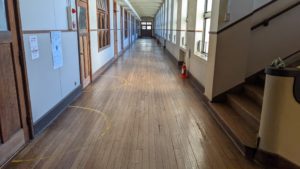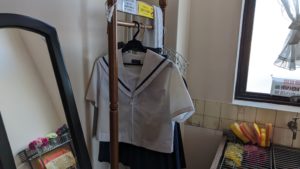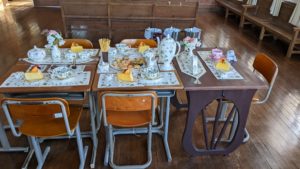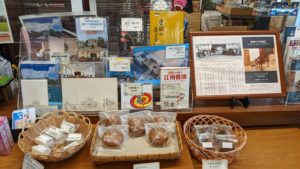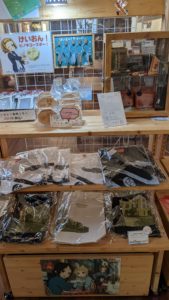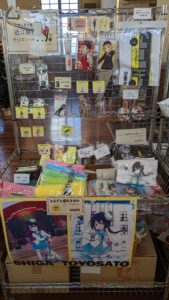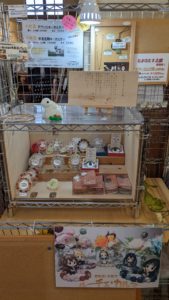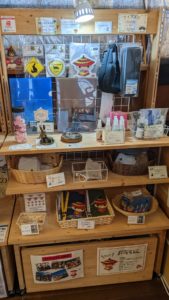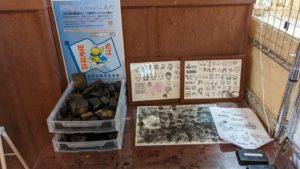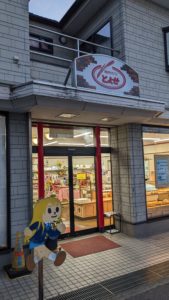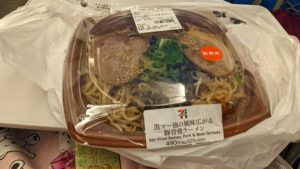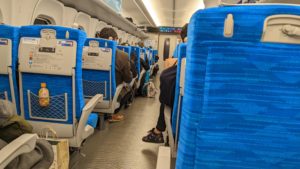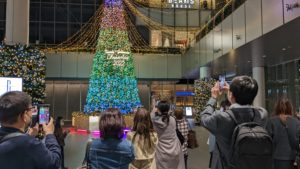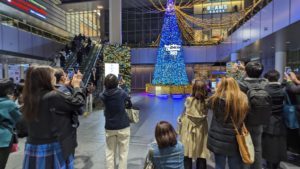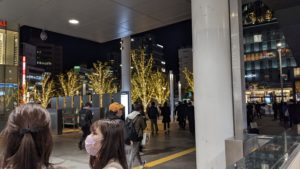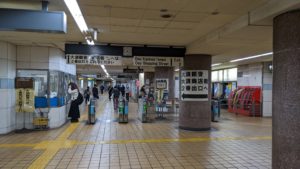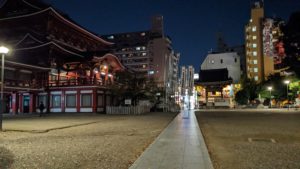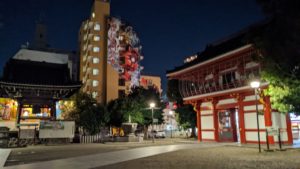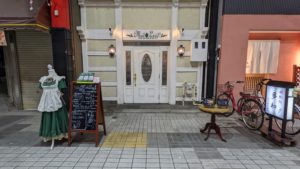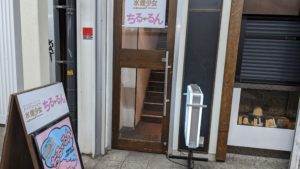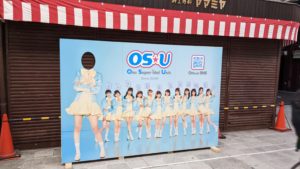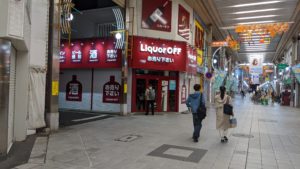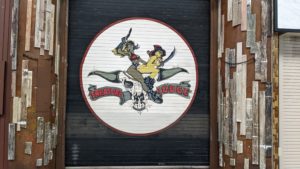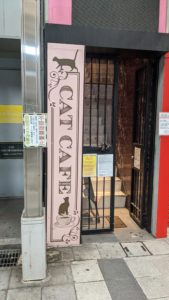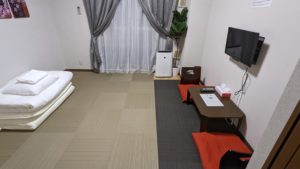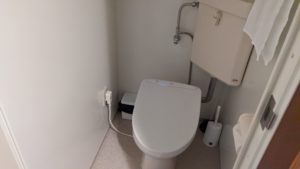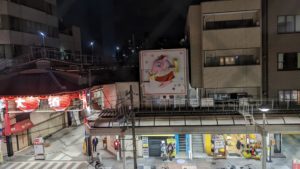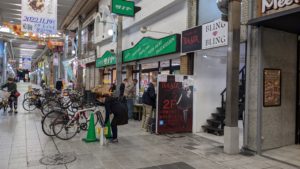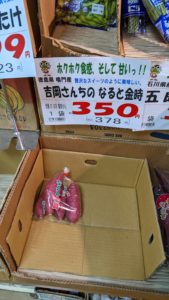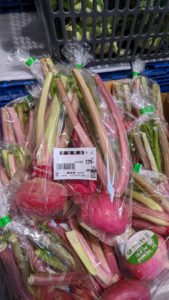Kami Watch Over Me Series - Table of Contents
| Entry | Notable Places/Events | Start of Day | End of Day |
|---|---|---|---|
| Day 0 – Thursday, Oct 20 2022 to Friday, Oct 21 2022 | Flight from Edmonton to Tokyo | Edmonton | Tokyo |
| Day 1 – Saturday, Oct 22 2022 | Saitama, Ikebukuro | Tokyo | Tokyo |
| Day 2 – Sunday, Oct 23 2022 | Autumn Reitaisai 9, Shinjuku | Tokyo | Tokyo |
| Day 3 – Monday, Oct 24 2022 | Akihabara | Tokyo | Tokyo |
| Day 4 – Tuesday, Oct 25 2022 | Hakone | Tokyo | Hakone |
| Day 5 – Wednesday, Oct 26 2022 | Kamakura, Enoshima Shrine | Hakone | Kamakura |
| Day 6 – Thursday, Oct 27 2022 | Hanno | Kamakura | Hanno |
| Day 7 – Friday, Oct 28 2022 | Shinkoiwa | Hanno | Tokyo |
| Day 8 – Saturday, Oct 29 2022 | Akihabara, Matsudo City | Tokyo | Tokyo |
| Day 9 – Sunday, Oct 30 2022 | M3-50, Moto-Yawata | Tokyo | Tokyo |
| Day 10 – Monday, Oct 31 2022 | Akasaka, Shimo-Kitazawa, Shibuya Halloween | Tokyo | Tokyo |
| Day 11 – Tuesday, Nov 01 2022 | Shinjuku, Sophia University | Tokyo | Tokyo |
| Day 12 – Wednesday, Nov 02 2022 | Sophia University, Kabukicho | Tokyo | Tokyo |
| Day 13 – Thursday, Nov 03 2022 | Shinjuku Loft | Tokyo | Tokyo |
| Day 14 – Friday, Nov 04 2022 | Shinjuku, Hanazono/Asakusa Tori no Ichi, Sensoji | Tokyo | Tokyo |
| Day 15 – Saturday, Nov 05 2022 | Nagano, Zenkoji | Tokyo | Nagano |
| Day 16 – Sunday, Nov 06 2022 | Ueda Sanada Festival, Ueda City, Sanada Shrine | Nagano | Nagano |
| Day 17 – Monday, Nov 07 2022 | Zenkoji, Kyoto, Nakagyo Ward | Nagano | Kyoto |
| Day 18 – Tuesday, Nov 08 2022 | Otsu, Omi Jingu | Kyoto | Kyoto |
| Day 19 – Wednesday, Nov 09 2022 | Fushimi Inari, Kashoji, Tofukuji, Shorinji | Kyoto | Kyoto |
| Day 20 – Thursday, Nov 10 2022 | Ohara, Sanzenin, Arashiyama | Kyoto | Kyoto |
| Day 21 – Friday, Nov 11 2022 | Kiyomizu, Ryozen Kannon, Yasaka Shrine | Kyoto | Kyoto |
| Day 22 – Saturday, Nov 12 2022 | Heian Raku Ichi Market, Osaka, Juso | Kyoto | Osaka |
| Day 23 – Sunday, Nov 13 2022 | Sukunahikona Shrine, Namba | Osaka | Osaka |
| Day 24 – Monday, Nov 14 2022 | Kobe (with Ran) | Osaka | Osaka |
| Day 25 – Tuesday, Nov 15 2022 | Maibara, Toyosato, Nagoya | Osaka | Nagoya |
| Day 26 – Wednesday, Nov 16 2022 | Osu, Banshoji, Naka | Nagoya | Nagoya |
| Day 27 – Thursday, Nov 17 2022 | Obara Shikizakura Festival, Rurikozanyakushi | Nagoya | Nagoya |
| Day 28 – Friday, Nov 18 2022 | Okayama, Kurashiki | Nagoya | Kurashiki |
| Day 29 – Saturday, Nov 19 2022 | Kyoto (with Xuanjie), Autumn Okayama Momotaro Festival | Kurashiki | Kurashiki |
| Day 30 – Sunday, Nov 20 2022 | Okayama, Sunrise Izumo | Kurashiki | Sunrise Izumo |
| Day 31 – Monday, Nov 21 2022 | Minowa, Enoshima Shrine, Ameyoko Market | Sunrise Izumo | Tokyo |
| Day 32 – Tuesday, Nov 22 2022 | Shibuya, Taito City | Tokyo | Tokyo |
| Day 33 – Wednesday, Nov 23 2022 | Akihabara | Tokyo | Tokyo |
| Day 34 – Thursday, Nov 24 2022 | Shinjuku (with Yaoxiang), Harajuku | Tokyo | Tokyo |
| Day 35 – Friday, Nov 25 2022 | Sensoji, Narita Airport, Flight from Tokyo to Edmonton | Tokyo | Edmonton |
| Final Thoughts | Final Thoughts |
Tuesday, Nov 15 2022 (Day 25)
Today was yet another transition day, whereby I check out of my previous place at 10:00 am (most places seem to give a check-out time of 10 am) and can’t check into my new place until 3:00 pm or so (it varies, sometimes as late as 5:00 pm or occasionally as early as 1:00 pm, but usually 3 pm). Most of the time I can reach my new place early and drop off my luggage and then go exploring my new haunt, but I had noticed that the place I had booked for Nagoya, which was a great rate in a great-looking area, specifically had a note that said that they couldn’t accommodate this. So what to do, what to do.
One of the things on my to-do list for Nagoya was a side trip to Toyosato, one of the smallest administrative towns in Japan but also the site of one of the more famous anime pilgrimages there is, that of the school in the K-On! anime. It was located a little bit off the beaten path though, and specifically included the use of not only a local railway line, but also my first unmanned train station, Toyosato Station. I had no idea what that really meant or how that worked and was a bit worried about how to get a ticket for that. So I actually decided that this was a good time to go — because if worst came to worst and I was stuck somewhere overnight, at least I would have all my possessions with me.
I checked the railway maps (or Hyperdia app/website) and, conveniently enough, one gets to Toyosato Station via a local railway from Maibara Station, which was actually on the way from Osaka to Nagoya anyway. So while it was a bit of an off-trek roam to get there, it wasn’t actually an entirely new shinkansen branch I had to take or anything, I just had to get off halfway and go. Osaka to Nagoya was probably the best time in my entire route around Japan to make this detour. The stars were aligned, and so I made sure my plans were, too!
Still, getting there from Osaka and then back to Nagoya required several hops. The first one was a small one, from Juso Station, where I was checking out of, to Shin-Osaka Station, where I would catch the bullet train from. While I had arrived at Osaka Station from Kyoto Station, I had arrived on a Limited Express train, the Super Hakuto, and not an actual shinkansen. Apparently the shinkansen do not actually stop at Osaka Station, which was about 30 minutes walk south of Juso Station, they stop at Shin-Osaka Station instead, which was about 30 minutes walk northeast of Juso Station. This involved me taking the Hankyu-Kyoto Line one stop from Juso Station to Minamikata Station, walking a couple minutes to the adjoining Nishinaka-Minamikata Station (same physical location more or less, but owned by a different rail company), and then taking the Osaka Metro Midosuji Line one stop from that mouthful to Shin-Osaka Station itself. Phew. It was easier than it sounded, but if I didn’t have luggage I would have walked, solely so I wouldn’t have to recount all that in my blog afterwards.
As an interlude, here’s Nishinaka-Minamikata Station:
And here’s Shin-Osaka Station’s Midosuji Line platform:
And Shinkansen platform:
I bought a bento to snack on while I was on the train, this Crab Rice and Sukiyaki Bento for a way overpriced 1480 yen. At least it had a pretty box cover. I actually kept this box cover.
The inside of the shinkansen looked like this:
Only the window seats on the Kodama have power plugs in the wall, the center and aisle seats do not, a quirk that I would find out later that the Hikari trains (which also run the Shin-Osaka to Tokyo route, known as the Tokaido route) also share. But I generally had the entire row of seats to myself today anyway, so this wasn’t a concern. And I had a window seat on the first leg of my route to Maibara Station, so I took pictures.
Maibara
Soon, I disembarked at Maibara Station, which was.. surprisingly small for a shinkansen station.
There was a really long escalator that led down to the ground floor, and the local train station for the train I needed to take, the Ohmi Railway Line, was right there.
There was a ticket attendant sitting at the only entrance to the station, and after telling him that I wanted to go to Toyosato, he gave me a one-way train ticket for 590 yen. I believe from reading around that on the weekends one might be able to get a two-way or full-day ticket for 800 yen or something, but I’m not sure about that. Anyway, he told me that the next train wasn’t leaving for 50 minutes or so (it only ran once per hour) so I went to walk around the area.
There was a Maibara City Hall next to the train station, and I went in there briefly and snapped some pictures of art contest submissions by local kids, to archive them.
I then went back to the station to sit down and enjoy the cool breeze and scenery, and after a few minutes the local train pulled into the station, even though it wasn’t scheduled to leave for nearly half an hour still. Maibara Station was at the end of the line, so it sat there for about half an hour and I wandered in and checked out the train itself.
Segue into how to pay train fare on weird local lines
The train line sure had a lot of splits for a train that only ran once per hour. It was a two carriage train with a door that connected the two carriages and one ticket box thing that I was unfamiliar with. Anyway, I still didn’t have a clue how the ticketing system worked at that point, but there was a sign on the doors that said that only the front door in the front carriage opened at unmanned stations, and I did figure out eventually, from watching other people that there were a few ways to pay the fare:
For collection,
1. At manned stations, all the doors with someone waiting to get off at them would open, and there would be a conductor waiting in the station itself to collect the fare in a little basket. This was similar to what I had experienced in the Nagano area when I took the Nagano Electric Railway Line on Day 16, and what I also saw happen at other stations today.
2. At unmanned stations, only the front door of the train opens for people trying to exit, and the driver on the train, who also doubles as the conductor, collects the fare. If one theoretically accidentally leaves through the second door like I did, which is where the people coming onto the train board at, instead of the front door, the conductor/driver will actually leave the train and intercept the person to get their ticket/fare.
2a. Sometimes, a station can be manned for part of the day and unmanned for another part. Especially in the evenings. Maibara Station turned into an unmanned station when I arrived there after sundown and the train conductor collected the fare instead. When I passed the ticket office on the way out, it was closed.
3. Occasionally there’s just a place to swipe one’s IC card (Suica/Pasmo etc) when getting on and off the ride. How nice when trains do this.
For payment,
1. One can get a ticket, single use or round trip or day use or whatever, from manned ticket windows like at Maibara Station.
2. There’s some sort of commuter pass I saw people using as well. In these cases they just wave the pass at the conductor as they’re leaving the train or the station.
3. In the case of the trip from Toyosato Station back to Maibara Station, I boarded the train and took a ticket from a ticket dispenser located just inside the door. This ticket had a number on it, signifying the stop I got on at.
When alighting, I then showed the conductor that ticket, paid the fare into the box next to him, and that was it.
4. Apparently on some unmanned stations on other lines, but not this one (or at least not Toyosato Station), one can sometimes just buy a paid ticket from an automated ticket machine as well.
5. Other lines also allow things like IC cards or the JR Pass to be used as or to offset payment. How nice, how nice.
The fare is usually shown via a from/to matrix, either at the station itself (showing how much it would cost to reach X station from there), or shown on a digital signboard over the front of the train that updates a bunch of boxes with all the numbers of the previous train stations and how much it would cost someone with that numbered ticket (station 11 in my case, for example) to alight at the next stop. The “price for alighting for someone with a ticket from station 11” would slowly rise as the train progressed on. Then they pay up by the front door while getting off the vehicle once they arrive at their desired stop. There’s usually a coin changer hanging around if needed as well. it’s kind of weird but interesting.
Then there are station changes. On my return trip, my train actually stopped at Hikone Station, and when I inquired, the conductor gallantly pointed me toward the opposite platform where a second train was eventually coming, and he made sure that I got onto the correct train. That train took me to Maibara Station safely. From research, it looks like it’s possible to get onto alternate routes from Hikone Station to Maibara Station that would end up costing a bit more than 590 yen in aggregate, which would probably have involved a platform change (a conductor with a basket was waiting here for the people leaving the platform) but that 590 yen was what I ended up paying anyway, despite the train change at the intermediate station, since I just crossed to the other side of the platform and waited for the next train instead of leaving the platform to go to another line. I just carried the original departure station ticket along with me to the new train.
It’s funny in hindsight though, how the random Nagano Electric Railway/Nagano Dentetsu experience helped me here, and how both that and this experience helped me later on as well — I later found out that buses and streetcars also operate in this exact manner — one boards the vehicle (usually via the rear door, though it varies), and either swipes a money card or grabs a ticket stating the stop which they got onto the vehicle from, and then swiped again or paid in coins when they exited the front door at their desired stop.
Toyosato
Anyway, back to my daily wanderings. The train eventually arrived at Toyosato Station after a long but scenic journey.
I moved some later pics into here too for purposes of flow and because the timetables are of better use here coming just after the train fares section, than later on after a mess of other galleries. Similarly, these are some random pictures I took around town as I walked to (and later on back from) my target location.
I was headed for the Former Toyosato Elementary School, as it’s known on Google Maps, the site where most of the K-On! anime takes place in. Oddly enough, I wasn’t the only one who got off at Toyosato Station — a couple Japanese locals also got off with cameras in tow, so it was fairly obvious where they were headed, and I half-followed them to our shared destination, though they were moving at a far quicker pace than me and I didn’t care because I was hoping they’d be done far quicker than I was as well.
My eyes were greeted by a rather familiar sight, once I finally trudged my way there and beheld those front gates and the school buildings behind them.
I also found out that I had lucked out — the school/museum was actually closed on Mondays, and I had arrived on a Tuesday. Lucky. I would never have noticed (even though it apparently says so on its Google Maps map pointer — if you click on the right one. There are other markers very close to it).
Anyway, from the way other reviews have gushed about the place, I expected the whole building to be a K-On! shrine of some sort. It was not. Actually most of the building were either administrative offices, closed classrooms and libraries full of boxes of stuff that probably used to belong to the actual school here, or a museum of things that had absolutely nothing whatsoever to do with the show.
That assembly hall, for example, was part of the show, but had nothing K-On! related in there at all. Anyway, there were two rooms that were the exception. One was the room at the very top of the school, basically two levels up from the main staircase right next to the main entrance. This was the only part of the main building (and I think the side buildings too, not sure) that went up to the third level. And this was the girls’ club room used in the show.
It was made up of the main tea room, a small side room with teapots and teacups and such, and a third room with a little piano and a songbook with some chords for some of the show’s iconic songs. No turtle fish tank though.
Tigey posed for a few pictures with the table:
And I also found what I had been looking for — the guestbooks!
I wanted to scan and catalog them all like I had done on my Chihayafuru and Yama no Susume pilgrimages, but there were just way too many here. Each binder contained somewhere from 5-10 books, and although I sat down on a bench by the side of the room and started scanning them, I got through the first four binders, out of 23 or so, before I simply ran out of time, physical energy, and phone/spare battery energy. Those first four binders gave me about 1500 pictures, around the same number as all the 18 volumes of Chihayafuru guestbooks that I had scanned in total. But hey, this gives me a reason to return to this place during some free weekends, if and when I finally manage to go to Japan to study. Part of the adventure this time was to try to figure out the path there, and I do know how to get there and back now. Like the others, I will have to sort, process, and then post the scans of the guestbooks that I do have sometime. It’s very interesting to me as an archivist/historian.
I burnt slightly over two hours here, from about 2pm to 4pm or so, and I saw a few people wander in and out to take photographs as I did so. A couple of the entrants were guys with cameras coming in alone by themselves, a couple were actual couples, coming in to affirm their shared love for the show, and one group was even an older woman with two younger people in tow. She seemed to mistake me for some staff member since I was furiously scanning things on the bench (next to my pile of luggage…) and asked me something in Japanese, I looked at her quizzically and shook my head and she walked away. Another group came in and wandered off into the side room and started playing the piano or keyboard for a bit. That was nice.
I also ran into a group of 20 or so well-dressed Japanese guys who were being led around in some sort of group expedition by a couple ladies that looked like tour guides, while I was walking around the school. They were just exiting the assembly hall side building and all bowed in apology to me as I stood aside for them to leave the building. I felt like royalty.
Other blog posts talk about there being a number of medium-sized school uniforms that people could actually try on and walk around in here, but the only one that was left here was a small one that could fit absolutely no one. I expect that this aspect of the museum was a casualty of COVID or something.
The other part of the school that was dedicated to K-On! was a side room off of the main hall — it looked like a cafeteria room, and had two halves to it, one half was a gift shop area with various Toyosato-branded paraphernalia in there (and some K-On! souvenirs, but it honestly looked like they were trying to use the popularity of K-On! to push their own regional mascot and school goods as well), and the other an impressive back area with donated guitars and posters and other things from fans of the show. I didn’t get to take pictures of that because my 2% phone battery decided to die off around there, and while recharging it with my spare battery I decided I needed to go try to catch the train as it was getting dark, but it was pretty much the same as this person’s blog post. I did get some pictures of the gift shop area though, attached below. There was also a smaller upstairs area with some display cases containing items that had nothing to do with the show, again.
I feel like the bloggers who had come here before me played up what was here a little bit due to sunk cost fallacy since they had come all the way here and couldn’t well say “oh.. it was okay.” Because that’s all it felt like — it was okay, outside of the fan shrine area with donated goods, which was fan-created, and the club room. That, or COVID changes meant many things were now hidden away in classrooms or something. Because while it was cool to see all the places animated in the show in person, and the guestbooks were impressive and do make me want to come back to scan them for my own obsession with cataloguing and archiving them, I expected to see more stuff around the school, but there was a lot of nothing. It didn’t actually sit well with me that they had turned the school into a museum for other things (although it’s important to honour the school’s history too, there were also a bunch of unrelated things like that steam engine thing in one of the pictures above) and basically all I got to see after coming all the way here to see was a table of teacups and cakes.
That’s exaggeration, of course, but this is a long journey out of the way. From either Osaka or Nagoya, it’s easily a 5+ hour journey in total there and back, possibly more if one gets screwed over by the abysmal waiting times for the Ohmi Railway trains — I had a 50 minute or so wait for my outgoing train from Maibara, and another 50 minute or so wait for the return train from Toyosato to Maibara, due to unlucky station arrival times. I did take pictures of the timetables on both ends though so that I can plan any subsequent trips better. They’re reposted here:
And it’s about a 15 minute walk from the school to the station, and I’d allot 20 minutes just in case, as a note to my future self, since my travel theme is yukkuri (slowly) and I take lots of time to get anywhere.
Anyway, it was still an interesting trip! I bought a Mio keychain and a couple of random town-related promotional CDs for the stash.
There was also a stamp area, so of course I picked up a stamp for my travel book.
As mentioned, I ran into another 50 minute or so wait for the train on the way back. While my phone was recharging, I looked around and noticed that a nearby bakery next to the train station was still open. Named Toyose, this bakery also had a little bit of a K-on! shrine feeling to it:
So that was neat. I picked up a few buns starting with C for the road — a cream cheese cake, a croquette in a bun, and a cream strudel or something like that. Some kind of strudel anyway.
To Nagoya
The sun had set by the time the Ohmi Railway return train hooted its way to Toyosato Station. These trains were extremely noisy, in particular when they are parked at a station and waiting for a certain time before leaving. There would be some sort of beeping or ringing or ding-donging noise or something every 30 seconds or so — it was so traumatic that I’ve blurred out whatever the actual noise was from my memory, so it’s just a weird fuzz now, but it was highly repetitive and annoying. Don’t arrive at Maibara Station too early for these trains. Worse is when, like at Hikone Station on my return trip, both trains on both platforms were sitting there and waiting for a particular spot in the schedule before moving, and doing their inane beeping just off sync with each other, so everyone could hear a constant double noise every half a minute or so. Argh.
Eventually, the train deposited me back at Maibara Station. I caught the next shinkansen to Nagoya Station, the Kodama 748, and of course got a bento to eat along the way as well. Maibara Station didn’t have a full shop selling ekiben, so this was just a regular bento with stir-fried ramen, pork, and bean sprouts, from the station’s convenience store.
Nagoya Station was huge and busy. There were also Christmas lights everywhere, from a tree out in the open that people were taking pictures of, to the trees that lined the road outside the station.
To get from Nagoya Station to my latest rental apartment, I needed to take the train two stops, but I had to change trains onto a different line after one stop. The odd thing was that there were at least three different train combinations that I could use to accomplish this, involving three different stations and four different railway lines, and they all took about the same length of time. I just picked whatever Hyperdia was telling me was the fastest (on average) at this point though, so I took the Nagoya City Subway Higashiyama Line one stop from Nagoya Station to Fushimi Station:
And walked down a long tunnel to get to my transfer. Eventually, I hopped on the Nagoya City Subway Tsurumai Line to my final destination, Osu-Kannon Station.
This area was interesting — it was located in a prime neighbourhood right in the middle of a huge shopping area named Osu, and the Osu-Kannon Station was named after a large temple named Osu-Kannon Temple that was just outside and above the station. Kannon is Kwanyin, the Goddess of Mercy that my parents follow and I respect, and I had already visited a couple of other temples dedicated to her on the trip thus far. This temple was right next to the Osu shopping streets and only a couple of blocks from my actual apartment, and it was cool to walk through both the temple and the streets at night.
Almost everything was closed (or operating behind closed doors) by this time of night, as it was around 7:30 pm or so. There were so many themed cafés in this area, from a maid café or two to an idol café to a cat café to a pirate-themed one as well and more. It was really interesting to see them all congregated within a street or two of each other as well. The door to the tiny little apartment complex where my housing apartment was, was basically next to one of the idol or maid cafés. Never did go into any of them though, unfortunately.
For the moment, I put my luggage down in my room and took some pictures of the place:
I got:
ට Brown rice (Hananoki Kenkou/Kenbi Genmai) (548 yen)
ට Kyoto Green Pepper (Manganji Amato) (348 yen)
ට Japanese Wild Parsley (Mitsuba) (99 yen)
ට 500g Sliced Pork (Buta Komagire) (598 yen)
ට Sweet Potatoes (Naruto Kintoki Satsumaimo) (350 yen)
ට Mixed Vegetables (Asuna Kikurage Iri Mix Yasai) (100 yen)
ට Mild Chicken Curry (Nakamura-ya Indo Curry Noukou Mild Chicken) (298 yen)
And two drinks, one bottle of tea for 65 yen and one Maroyaka Banana & Milk drink for 89 yen. Plus tax. This banana milk (there’s a strawberry milk variant too) has been my favourite drink thus far on the trip and I’ve sought out and bought several of those bottles now. They usually go from anywhere around 75 yen or so to about 125 yen or so, I believe.
My meal ended up like this:
It was actually kind of plain, and a little bitter, so I added in a miso soup packet and it was saved. I wasn’t really sure how to prepare any of the dishes, but learnt from this that the potatoes were probably cut too thin (and I was probably supposed to peel off its skin first) and that the parsley leaves were edible but the stalks probably didn’t help the taste (I had taken out most of the stalks anyway before cooking, but not all). I adapted these things for the next day.
Shinkansen Running Total
I have a 21-day JR Pass that kicked in on Nov 05 and should last until the end of my trip on Nov 25. It cost $568 CAD, which cost around 61,769.08 yen, as per Google as of the first writing of this section. So I was curious and wanted to keep a running total — was this thing actually worth it?
That’s what I hope to find out with this section. For the full explanation blurb on this, check this corresponding section of the Day 15 blog post.
Trips
ට Nov 05 2022 – Asama 611 (Tokyo to Nagano) – U: 7810, R: 8340
ට Nov 06 2022 – Hakutaka 556 (Nagano to Ueda) – U: 1470, R: 2790
ට Nov 06 2022 – Asama 615 (Ueda to Nagano) – U: 1470, R: 2790
ට Nov 07 2022 – Kagayaki 509 (Nagano to Kanazawa) – 8920 (reserved seats only)
ට Nov 07 2022 – Thunderbird 24 (Kanazawa to Kyoto) – U: 6490, R: 6820
ට Nov 08 2022 – JR Kosei Line (Kyoto to Otsukyo) – 240 (unreserved seats only)
ට Nov 08 2022 – JR Kosei Line (Otsukyo to Kyoto) – 240 (unreserved seats only)
ට Nov 08 2022 – JR Nara Line (Kyoto to Inari) – 150 (unreserved seats only)
ට Nov 08 2022 – JR Nara Line (Inari to Kyoto) – 150 (unreserved seats only)
ට Nov 09 2022 – JR Nara Line (Tofukuji to Kyoto) – 150 (unreserved seats only)
ට Nov 10 2022 – JR Sanin/Sagano Line (Saga-Arashiyama to Kyoto) – 240 (unreserved seats only)
ට Nov 12 2022 – Super Hakuto 7 (Kyoto to Osaka) – U: 1230, R: 1760
ට Nov 15 2022 – Kodama 720 (Shin-Osaka to Maibara) – U: 4510, R: 4840
ට Nov 15 2022 – Kodama 748 (Maibara to Nagoya) – U: 3100, R: 3430
Running Total
Unreserved: 36,170 yen
Reserved: 40,860 yen
